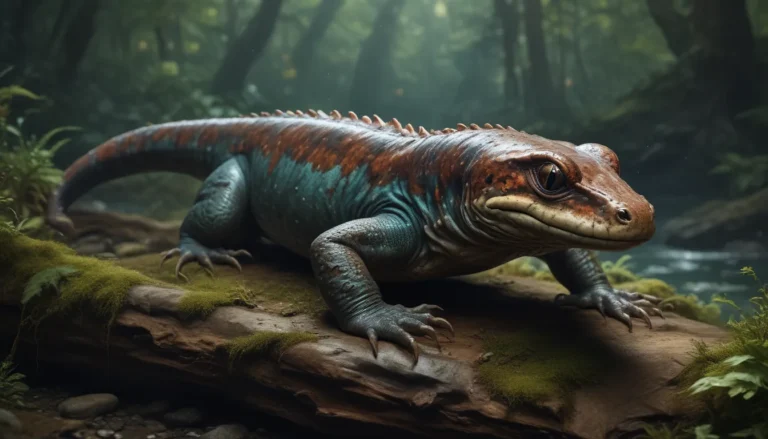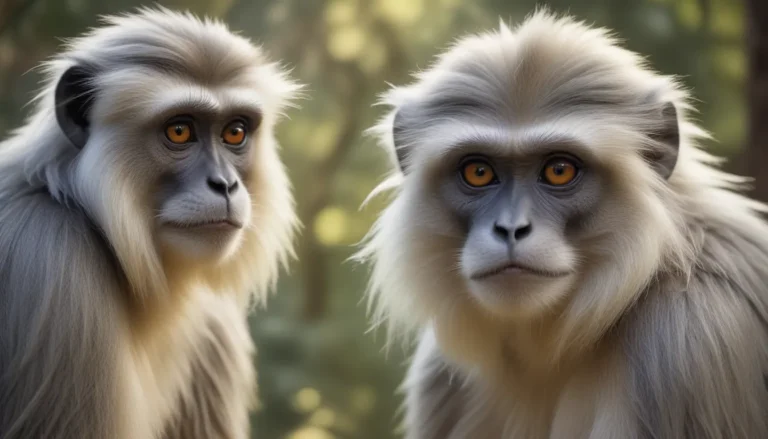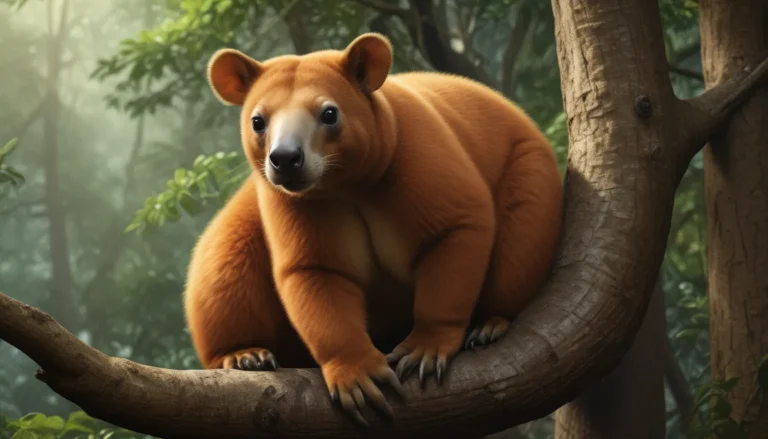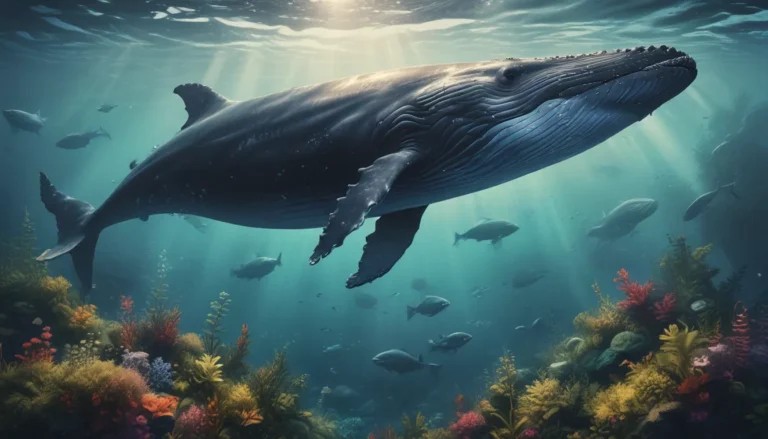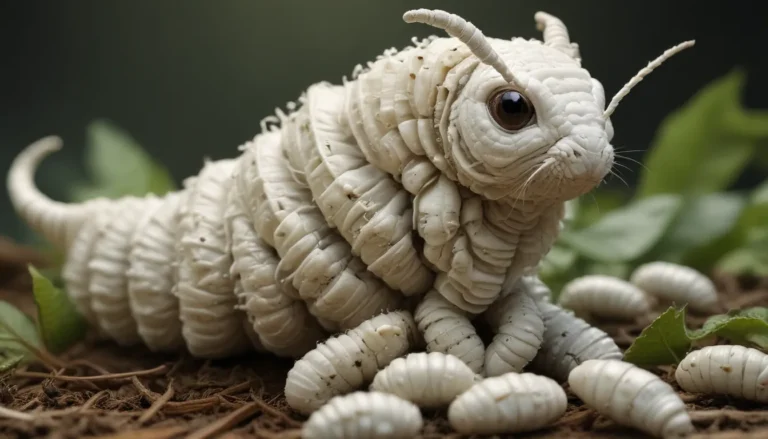The pictures we use in our articles might not show exactly what the words say. We choose these pictures to make you interested in reading more. The pictures work together with the words but don’t take their place. The words still tell you the important facts.
Welcome to the captivating world of Supersaurus! If you have a fascination for colossal creatures that once roamed the Earth, then get ready to be amazed. In this article, we will delve into 18 intriguing facts about Supersaurus, one of the largest dinosaurs to have ever existed. From its immense size to its unique adaptations, Supersaurus has captured the imagination of paleontologists and dinosaur enthusiasts alike. Join us on a journey back in time as we uncover fascinating details about this majestic creature. Whether you are a dinosaur aficionado or simply curious about Earth's prehistoric past, these Supersaurus facts will undoubtedly leave you in awe of the incredible diversity and scale of ancient life.
Unveiling the Colossus: Key Takeaways
- Supersaurus, with its 100-foot length, long neck, and tail, was a gigantic dinosaur that roamed the Earth during the Late Jurassic period. Its hollow bones and peg-like teeth were adaptations that enabled its survival, making it a super-sized reptilian marvel.
- Despite its colossal size, many mysteries surround Supersaurus, from its weight and brain size to the function of its long tail. Its sheer magnitude continues to intrigue scientists, reshaping our understanding of sauropod dinosaurs.
Unraveling the Giants of the Past: Supersaurus Anatomy
Supersaurus: A Monument of Size
Supersaurus was truly a titan of the prehistoric world, boasting an impressive length of up to 100 feet. Its sheer size makes it one of the most awe-inspiring dinosaurs to have ever walked the Earth.
The Necks and Tails of Titans
With a neck that could stretch up to 50 feet and a tail of equal length, Supersaurus was well-suited for browsing vegetation, showcasing an incredible reach that set it apart from other dinosaurs.
The Genesis of Discovery: Fossils in Colorado
In 1972, the first partial skeleton of Supersaurus was uncovered in western Colorado, offering valuable insights into the anatomy and behavior of this massive dinosaur.
Journey through Time: The Era of Supersaurus
Late Jurassic Wanderer
Supersaurus, a colossal herbivore, roamed the Earth approximately 150 million years ago, coexisting with iconic dinosaurs like Brachiosaurus and Allosaurus.
Adaptations for Survival
Just like other sauropods, Supersaurus boasted hollow bones that reduced its body weight while maintaining strength, a crucial adaptation for supporting its massive frame.
Deciphering the Name: The Meaning of Supersaurus
Derived from Latin roots, the name "Supersaurus" perfectly encapsulates the monumental nature of this dinosaur, truly a super-sized reptilian wonder.
A Glimpse into Supersaurus’ Lifestyle
Dietary Specialization
Unlike some herbivorous dinosaurs with complex teeth, Supersaurus sported peg-like teeth ideal for stripping leaves and branches, showcasing a unique feeding adaptation.
Social Speculations
Paleontologists speculate that Supersaurus may have lived and migrated in herds, suggesting potential benefits for protection or communal foraging activities.
The Enigma of Proportions
Despite its colossal size, Supersaurus boasted a relatively small head in comparison to its body, adding to its distinctive appearance in the realm of dinosaurs.
Veiled in Mystery: The Unknowns of Supersaurus
Weighty Secrets
The exact weight of Supersaurus remains shrouded in uncertainty due to fragmented fossil evidence, leaving scientists to estimate its heft based on incomplete data.
Brainpower Perspectives
Despite its mammoth size, Supersaurus possessed a relatively small brain compared to its body, indicating a reliance on instinctual behaviors over cognitive capabilities.
Metabolic Ponderings
Due to its vast body mass, Supersaurus likely had a slow metabolic rate, enabling efficient energy utilization from its plant-based diet.
The Lure of the Long Tail: Debates and Theories
Tale of the Tail
The true function of Supersaurus' elongated tail remains a subject of debate, with theories ranging from balance and defense to potential communication purposes.
Global Footprints
While most Supersaurus fossils hail from North America, fragmentary remains in Europe hint at a broader distribution of this magnificent dinosaur across continents.
The Reach of Supersaurus
Thanks to its towering stature and elongated neck, Supersaurus had the ability to access vegetation up to 30 feet high, granting it a competitive edge in foraging.
Enduring Curiosity: Unraveling the Mysteries of Supersaurus
Scientific Fascination
The colossal size and limited fossil records of Supersaurus continue to captivate scientists, driving ongoing research to unveil more details about its biology and behaviors.
Revelations of Discovery
The discovery of Supersaurus revolutionized our perception of sauropod dinosaurs, offering groundbreaking insights into their extreme size and anatomical adaptations.
Conclusion: A Glimpse into the Past, A Tribute to Supersaurus
In conclusion, Supersaurus stands as a remarkable dinosaur with a captivating history. From its monumental stature to its unique physical traits, Supersaurus remains a symbol of awe-inspiring power and remarkable evolution. While much of our knowledge is drawn from fragmented fossils, ongoing research continues to illuminate the story of this colossal creature, shedding light on the diversity and scale of dinosaurs during the Jurassic era. As we marvel at the legacy of Supersaurus, we are reminded of the extraordinary creatures that once roamed our planet.
Explore Further: Frequently Asked Questions
- How big was Supersaurus?
-
Supersaurus was approximately 100 feet long, ranking among the largest known dinosaurs.
-
When did Supersaurus live?
-
Supersaurus inhabited the late Jurassic period, around 150 million years ago.
-
What did Supersaurus eat?
-
Based on its teeth, Supersaurus was likely a herbivore, sustaining itself on plants and vegetation.
-
Where have Supersaurus fossils been found?
-
Supersaurus fossils have been unearthed in North America, particularly in states like Colorado, Wyoming, and Utah.
-
How does Supersaurus differ from other sauropods?
-
Supersaurus stands out with its exceptionally long neck and tail, distinguishing it from its sauropod counterparts.
-
Was Supersaurus gregarious?
-
While debated, evidence suggests that Supersaurus may have lived in herds, displaying potential social behaviors.
-
What is the origin of the name “Supersaurus”?
-
The name "Supersaurus" originates from the Latin terms "super" (above) and "saurus" (lizard), reflecting its colossal size.
-
Who discovered Supersaurus?
-
Supersaurus was initially discovered by James Jensen, a paleontologist, in the late 1970s.
-
Are there museums exhibiting Supersaurus fossils?
-
Several museums worldwide showcase Supersaurus fossils, offering visitors a glimpse into the world of this colossal dinosaur.
-
Are there relatives of Supersaurus?
- Yes, Supersaurus belongs to the sauropod group of dinosaurs, sharing lineage with giants like Brachiosaurus and Apatosaurus.
Join Us in the Quest for Knowledge!
Our dedication to providing engaging and reliable content drives us to deliver a wealth of insights and information to our readers. Every fact shared on our platform is meticulously reviewed by our team of editors, ensuring a standard of accuracy and authenticity. Trust in our commitment to quality as we invite you to explore, learn, and discover the wonders of our prehistoric past together.

